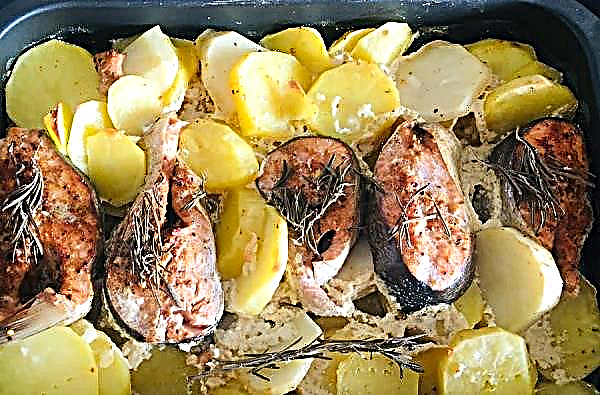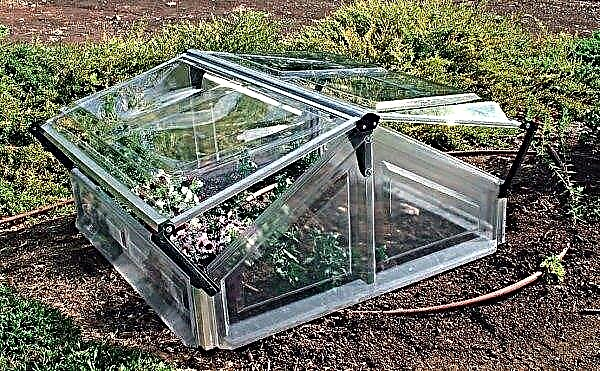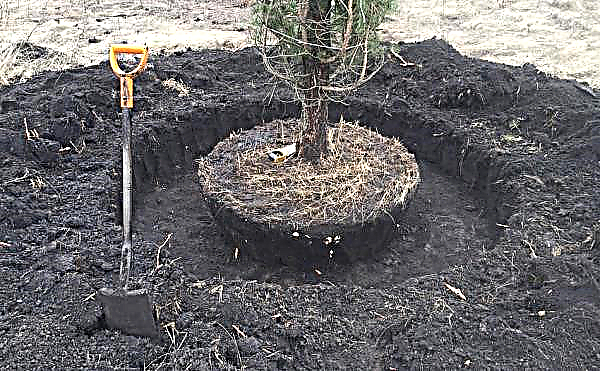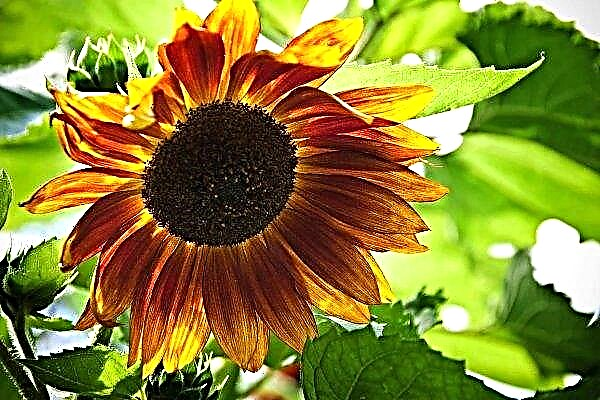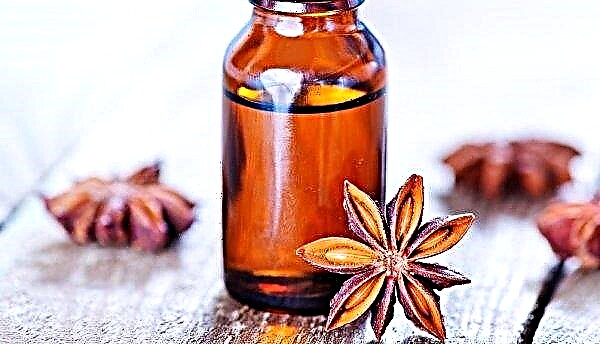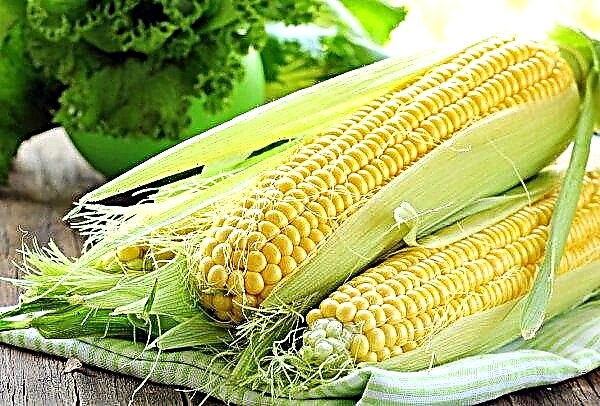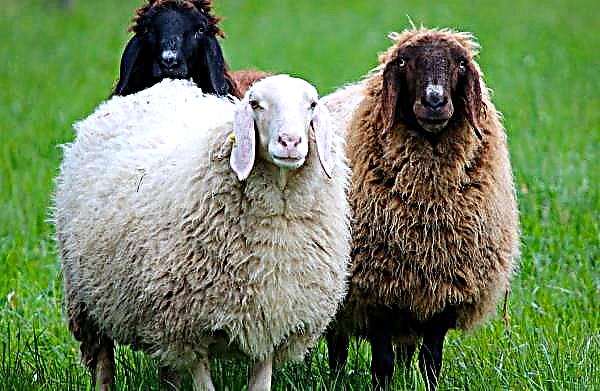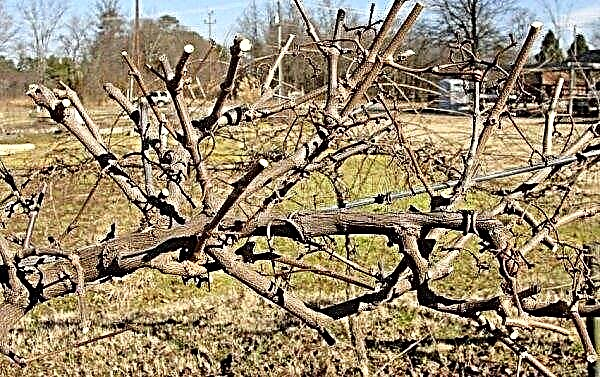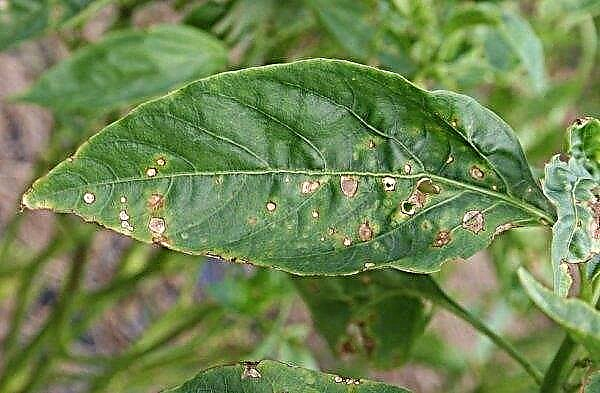Fruit trees are known to be planted in spring or autumn. However, when it comes to peaches, most gardeners prefer to carry out this procedure in the autumn. About what caused such a choice of the season, when specifically you need to plant a heat-loving fruit tree, what place you need to choose for it and what conditions to provide - all of this and much more will be discussed in this review.
Why should you plant a peach in the fall, and not in the spring?
Autumn tree planting has a number of undeniable advantages over spring.
- Among the reasons for which it is worth carrying out planting work in the fall, it is worth mentioning the following:
- In the fall, when the tree is at rest, it is much easier for it to survive stress.
- In the cold period, the causative agents of the most dangerous diseases, as well as insect pests, hibernate and do not cause disturbance to the seedling, giving it the opportunity to take root, without "diverting" its forces to the fight against pathogenic organisms.
- Active sap flow in spring causes rapid growth of the aerial parts of the tree, while the roots of the newly planted seedling have not yet managed to strengthen. This leads to the same effect that occurs when freshly cut tree branches are placed in water: for some time, the buds will bloom actively, but in the end the branch will dry up without taking root. On the other hand, during the autumn planting by the onset of spring, the root system of the seedling already manages to grow stronger and prepare to ensure the full development of the aerial part of the tree.
- The choice of seedlings for sale in autumn is much richer, their prices are lower, and the quality of planting material is better. In the spring, the most popular varieties are usually already sold out, only the leftovers are on sale, and it is much more difficult to determine its quality and viability by a seedling devoid of leaves.
However, if for the majority of fruit trees grown in temperate climates, these arguments are weighty and worthy to be taken into account, then in relation to peach their value should be considered as determining.
Important! Spring planting is traditionally considered preferred only in regions with severe winters, where the risk of seedling dying from severe frosts outweighs the benefits of planting in the fall, but in such climatic conditions peaches simply do not grow.
Long-term practice shows that, unlike apple trees, pears and other fruit trees with strong immunity and high vitality, peach does not tolerate transplantation very well, and therefore this procedure must be carried out when the plant is in a "sleeping" state, otherwise it will not take root. On the contrary, with a correctly conducted autumn planting, the tree already in the next spring begins to give an active growth, and from the third year it successfully fruitates.

Peach planting dates in the fall
It would be fundamentally wrong to talk about the exact calendar dates for which a peach should be planted, without reference to a specific climatic zone and current weather conditions. The fact is that, although the tree should already have completed the active period of vegetation by the time of transplantation, before the present frosts the plant should still have enough time for its root system to be fixed in the soil and, thus, prepare for the cold.
Important! The planting time of the peach should be calculated so as to exclude the likelihood of the appearance of new leaves and shoots, but at the same time allow the roots to grow and develop.
The first of the indicated conditions will be guaranteed to be fulfilled if the tree is postponed until it drops the foliage, and to comply with the second, it is necessary that at least 4-8 weeks remain before frosts. The wetter and warmer autumn was, the later you need to start landing.
Depending on the climatic zone, this period may fall on:
- end of September - for the Volga region, Belarus, northern and northwestern regions of Ukraine, central regions of Russia;
- mid October - for Transcarpathia, Rostov region, Krasnodar and Stavropol Territories, Ingushetia, Dagestan and other regions of the North Caucasus;
- End of october - for Moldova and the southern regions of Ukraine;
- mid November - for the Crimea, the Black Sea coast of Georgia and other regions with a climate close to subtropical.
Video: Peach planting in the fall
How to plant a peach?
In order for the peach not only to develop normally, but also to bear fruit in areas with unusually cold climatic conditions for a given tree, it is important not only to plant it at the right time, but also to observe a number of other conditions.
Important! Peach has a low winter hardiness, but it is very hardy. The tree can tolerate a decrease in winter temperatures to -28 ... -30 ºС, and, in the case of freezing, it recovers quite quickly.
Nevertheless, for cultivation in regions located north of the Crimea, it is better to focus on specially bred winter-hardy varieties of wood.
| These include, for example: | |
|
|
Many of the listed peach varieties, as practice shows, demonstrate not only high winter hardiness of wood, able to withstand temperature drops to -32 ºС, and flower buds that do not freeze at -21 ... -23 ºС, but also resistance to spring return frosts: buds that have formed these trees can be preserved during cooling to -8 ... -10 ºС, and already opened flowers and even delicate ovaries do not freeze if the temperature drops to -1 ... -2 ºС.

It is equally important, in addition to the variety, to choose the right place on the site for planting peaches and to prepare the optimal soil for the seedling.
Site selection
One of the most important requirements that a peach makes for growing conditions is lighting.
Important! The minimum sum of active temperatures ensuring the normal fruiting of peach is 2500 degrees during the season.
In order to ensure the prospect of achieving this indicator, the tree needs to be planted in the most illuminated place that is on the site, and it is also important that it is protected from cold winds, that is, it can warm up as much as possible. In partial shade, peach fruits are formed small, and, in addition, have a pale and unattractive color. And the palatability of such fruits leaves much to be desired - their sugar content is extremely low.
 The depth of groundwater must be at least 1.5–2.0 m, otherwise the root system of the tree will rot. The problem, however, can be solved by constructing for the seedling an embankment of the required height and a diameter of at least 2.0–2.5 m
The depth of groundwater must be at least 1.5–2.0 m, otherwise the root system of the tree will rot. The problem, however, can be solved by constructing for the seedling an embankment of the required height and a diameter of at least 2.0–2.5 m
When choosing a place to plant, you need to consider that a peach is a lonely tree. This southerner does not like any other neighbors, except for representatives of his own kind, and, which is characteristic, this attitude is usually mutual. Therefore, the minimum allowable distance between the peach and other fruit trees should be 4 m. But even if we are talking about planting several peaches, it is undesirable to reduce this distance to more than 3 m, otherwise the trees will simply obscure each other.
Did you know? The homeland of peaches is not Iran at all (until 1935 - Persia), but China. Until now, this tree in the Middle Kingdom is revered as divine and is a symbol of longevity, and its flowers are associated with purity, purity and eternal youth.
The peach is especially difficult to tolerate the neighborhood with an apple, pear, cherry, sweet cherry, apricot and walnut. So, for example, apricots usually try to deviate as far away from the peach as possible, and peaches just as actively deviate from cherries and cherries. Moreover, that side of the tree, which is forced to be closest to the “antagonist,” develops more slowly, exposes itself, gets sick, freezes in winter, so that in the end the whole tree can die.

The irreconcilable attitude of the mentioned tree species to each other is caused by a phenomenon that has received in science the name “allelopathy” (from the Greek “ἀλλήλων” - mutual, and πάθος - suffering. We are talking about the fact that the root system of one plant releases certain substances into the soil (phenols, alkaloids, volatile, etc.), which adversely affect the development of some other plants.
Since such compounds can accumulate in the earth and remain in it for a sufficiently long time, when planting a peach, it is important not only to observe the maximum distance between it and its antagonists, but also to take into account which trees grew in this place before. Given the "inanimity" of the species, a peach is best planted on virgin soil, or on a site where flowers, vegetables and other low-growing crops were previously grown, and if trees grew, then at least not fruit trees.
Did you know? One of the easiest ways to determine soil acidity on a site is to study the weeds that sprout on it. For example, buttercups and sphagnum mosses prefer acid soil, alkaline - field mustard and self-sifting poppy, neutral - bindweed, adonis, nettle and sow thistle.
Soil preparation
Peach grows best on light, loose and nutritious soil with a neutral reaction (pH level in the range of 6.7–7.0, the thickness of the fertile layer is 0.5 m).
When evaluating the type of soil for planting a tree, the following rules should be considered:
| Suitable soil for peach | Unsuitable peach soil |
|
|
If the initial soil composition does not fit the tree, the soil composition and structure should be preliminarily adjusted: humus, compost and other organic matter are introduced into the depleted soils, heavy ones are lightened with sand or peat, acidic limes, and alkaline ones are enriched with potash and organic fertilizers.
For a more accurate analysis, there are special devices or rapid tests. Only with their help it is possible to determine what and how much to add to the soil so that the peach feels as comfortable as possible.

Landing description
Planting any tree begins with the preparation of the pit, and you need to dig it not on the eve of planting a seedling, but in advance so that a natural environment can be formed at the bottom, consisting of soil bacteria and other organisms necessary for the tree. Experts recommend preparing a pit at least 3-4 weeks before planting, but it is even better to do this in the spring.
The approximate dimensions of the pit for planting one or two year old peach seedlings are 70 cm in depth and 70-100 cm in diameter. On poor and heavy soils, the pit should be made more voluminous in order to bring more fertile soil into it during planting, and also lay an additional drainage layer at the bottom. In this quality, it is best to use not broken brick or screenings, as many gardeners recommend, but pieces of turf turned upside down with the green part. At the initial stage, they will provide drainage, and then turn into a full-fledged organic fertilizer.

In the earth extracted from the pit (it is better to use only its upper, most fertile layer) add:
- compost, rotted manure or humus - from 1 to 5 buckets, depending on the initial composition of the soil;
- phosphorus and potassium fertilizers (for example, 300 g of superphosphate and 100-150 g of potassium sulfate or 200-500 g of wood ash) or complex mineral top dressing (for example, 100-200 g of nitrophosphate).
The resulting mixture should be laid at the bottom of the prepared hole and sprinkled on top of it with a small layer of ordinary garden soil without additives, so as not to burn the roots of the seedling. Fill the hole in the process of planting should be "clean" earth.
Important! Before planting, it is recommended to soak a peach seedling in water for 2-3 days, having buried the tree in a liquid to a third of its height.
The procedure itself is carried out according to the following scheme:
- Form a small hill at the bottom of the pit.
- Drive away from the center of the hill a little support for the future seedling - a wooden stake or other suitable structure.
- Set the seedling to the top of the hill with the vaccine south.
- Gently distribute the root processes on the slopes of the hill, directing them in different directions.
- Holding the tree in an upright position, gradually sprinkle the pit with fertile soil, occasionally interrupting and ramming the soil with your feet, so that there are no air chambers inside.
- When the soil layer above the root neck of the seedling reaches 5–7 cm, water abundantly the area of the trunk circle, having previously formed a roller from the ground along its edges so that the water does not spread to the sides. Water for irrigation should be slightly warmed up so as not to overcool the roots.
- Having waited until the water is absorbed, mulch the ground around the seedling with peat, sawdust, rotted manure or leaves with leaves (foliage of fruit trees should not be used, because pests and pathogens of various diseases can settle in it for wintering, and straw because it attracts rodents to the site) .
- Use a soft twine or braid to tie the seedling to the support.

Care after planting, preparation for wintering
The first and most important moment in caring for a tree planted in autumn is its preparation for winter. It is necessary to start carrying out this work in advance, approximately 1-2 weeks before the onset of the first frost.
First, the seedling should be abundantly watered, using at least 2–3 buckets of well-maintained water and warmed to room temperature. In moist soil, the root system of the tree will be much easier to tolerate frost than in dry soil.
Did you know? According to Chinese mythology, in the garden of Si-wan-mu, the goddess of immortality, there was a magical peach tree that bloomed once every three thousand years and then formed the only fruit for the same number of years. But, having tasted it, a man learned all the secrets of the universe, gained the ability to fly like a bird and live forever, forever remaining young at the same time.
Further warming of peach depends on the winter hardiness of the variety and the climatic zone. If, taking into account the two indicated parameters, the risk of freezing is low, the so-called “sheepskin” method can be used.
It consists in the fact that the branches of the seedling are carefully tied with a soft twine, pulled to the center, then they trim the tree over the entire height with spruce paws, after which the seedling is covered with a linen bag of light material, or wrapped with several layers of dense spunbond, agrotechnical fiber or other air-permeable material (necessarily light shades) and reinforce the resulting design with ropes.

If the winter is expected to be harsh, you can use a more reliable way of protection. The entire area of the trunk circle on top of the mulch layer should be covered with pine legs, as well as specially sewn mattresses filled with sawdust, peat or straw. It is important to try to make the shelter as high as possible.Then, with all precaution, the seedling should be bent to the insulated layer, and a few more mattresses should be laid on top.
Important! Peaches respond very well to pruning: the more radical it is, the larger the fruits. Moreover, to ensure large-scale fertility, not only anti-aging, but also thinning pruning is necessary, as well as rationing of the crop, that is, the removal of excess ovaries from the branches.
The finished construction, to give it stability, is covered with a spanbond and with the help of pins its edges are attached to the ground. A similar method of winter shelter can be used for older peaches, but in this case it is not necessary to bend the whole tree, but only its lower branches (about half of their total number). This will be enough to keep the main part of the seedling intact even in the most severe frosts.
 If a peach planted in the fall survived its first winter in a new place, the tree is likely to be accepted and will develop normally. All that a gardener needs to provide in subsequent years is pruning, watering and top dressing
If a peach planted in the fall survived its first winter in a new place, the tree is likely to be accepted and will develop normally. All that a gardener needs to provide in subsequent years is pruning, watering and top dressing
When forming a crown, it should be borne in mind that when growing a tropical inhabitant in a cold climate unusual for him, it is best to prune so that the height of the peach looks more like a bush than a full-fledged tree. The optimal crown height should not exceed 1.5 m, and experts advise forming it in the shape of a bowl. This method of crown formation involves the presence of several (3-4) shoots of the same height, that is, the central conductor of the tree is missing.
To achieve this result, in spring, when the air temperature in the daytime reaches +6 ºС, and several dry days are outlined, the youngest tree needs to be selected 2–3 of the strongest shoots growing in the lower part (10–20 cm from the vaccination site or, in in case of its absence - from the ground), and shorten them to 3-4 kidneys. The remaining branches should be cut “into a ring” (to the trunk itself).
Important! The drought tolerance of peach is much higher than that of cherries and plums, so the tree tolerates a lack of watering quite well.
The central conductor is also radically shortened to stimulate lateral growth. In the future, you need to ensure that the branches grow evenly: those shoots that are ahead in the development of their neighbors should be shortened, and the cut must be done above the external bud, otherwise the lateral process will be directed towards the trunk, obscuring the crown and preventing other branches from developing. If the annual growth exceeds 50 cm, all branches are slightly shortened in the middle of summer, this provides a halt to the development of young shoots, most often freezing in winter.
The "low" (bush-like) peach formation provides the maximum laying of fruit branches, and on them - sleeping buds, which allow to restore the crown without much effort if it freezes.

In early spring and during the fruit laying period, peach should be watered abundantlyotherwise, the young seedling may stop in development, and in an adult tree, the forming fruits will crack. In order for moisture to not evaporate after watering, the mulch layer should be constantly updated. The same procedure will solve the problem of weeds, saving the gardener from the need for constant weeding, and also provide the tree with organic top dressing (due to decay of the lower layer of mulch). In the absence of peat or sawdust, as a mulch, you can use turf or grass mowed during mowing.
Mineral fertilizers for peach in the early years should be applied several times during the season, with the nitrogen component (manure, urea, ammonium nitrate) used in the spring, and the potassium component (potassium sulfate, potassium salt, wood ash) and phosphoric (superphosphate) in the summer and autumn . Before fertilizing, peach must be watered abundantly.Did you know? The Taoist god Shou-sin, who knows longevity, is usually depicted either with a peach in his hand, or inside the fruit and emerging from it. The adherents of Taoism in search of the elixir of youth used different ingredients, but peach was always present in their list.

Caring for a fruit tree involves an event such as preventive treatment for diseases and pests. Such procedures should be carried out in the spring - "on a green cone" (before the buds open) and after flowering. Both procedures are equally important because they are aimed at combating pathogens that are activated at different times.
For processing, you can use any systemic fungicides, insecticides and acaricides, but it is better to give preference to drugs with low toxicity. These, for example, include classic mineral fertilizers diluted in higher than usual concentrations, for example:
- Bordeaux mixture (vitriol) - 100 g per 10 liters of water;
- urea - 30–40 g per 10 liters of water;
- superphosphate - 30-30 g per 10 liters of water.
In addition, for the prevention of diseases and pests, you can use root and root treatments with such biostimulants as:
- Uniflor
- “Tsitovit”;
- Ferrovit
- "Bio-master";
- Argat-25;
- Silk;
- "Zircon";
- "Novosil";
- Gumiks.
 Such modern preparations do not contradict the idea of organic farming, do not harm the environment and are safe for people, pets, and bees
Such modern preparations do not contradict the idea of organic farming, do not harm the environment and are safe for people, pets, and bees
When is it better to transplant a peach - in spring or autumn?
As a rule, seedlings planted in a permanent place no longer move. However, there are situations when a gardener still has to transplant a young tree. For example, such a need arises if:
- the place where the tree grows was clearly unsuccessful for him;
- the layout of the plot has changed, as a result of which the seedling is darkened or it is supposed to place a building or another building in its place;
- the tree grew from a seed, root shoot, or rooted cuttings, that is, initially it is "out of place."
Important! Fruit trees older than fifteen years old are not transplanted. It is believed that at this age, after a transplant, the plant still does not take root.
When deciding on a transplant, one should know that a peach, like other stone fruits, tolerate this procedure very hard, unlike, for example, apple trees and pears that are more loyal to such manipulations. In addition, seedlings grafted onto stocks of hardy and unpretentious crops such as cherry plum or plum obtained as a result of rooting of cuttings have a much better chance of surviving the transplant than root-growing trees, as well as peaches grafted onto other peaches.
With all these considerations in mind, replant this type of tree is necessary according to the same rules by which the seedling is plantedbut with even greater precautions. For this reason, spring is minimally suitable for such manipulation; instead, preference should be given to the autumn period. Unlike the usual planting of a young tree, an adult peach is best replanted with a lump of land, in which case the plant will experience much less stress, although, of course, it will not be possible to disturb the root system at all.
Video: How to transplant a peach
Since, as was said, peaches better take root in a new place, if they are planted at a time when the tree is at rest, transplanting is obviously very risky the procedure is sometimes recommended and completely rescheduled for the winter. During this period, the activity of life processes in the roots and the aerial part of the tree is at a minimum level, so there is a chance that the manipulation will pass unnoticed. However, such an extreme option is only suitable for areas with not too severe winters, where the temperature rarely drops below -15 ° C.
For transplantation, you should choose a warm February day, when it is dry and snowless outside, and the soil condition allows you to work with a shovel. However, the standard option is still late autumn.
Until recently, the very idea of growing peaches in the middle lane seemed absolutely impossible, but today breeders have bred many varieties of this crop with a fairly high frost resistance, quite suitable for regions with cold winters. Nevertheless, peach by its nature remains a gentle and moody southerner. Therefore, it is best to plant and replant such a tree in the fall, when the period of active vegetation is already over, in this case the chances that the plant will take root are much higher.



